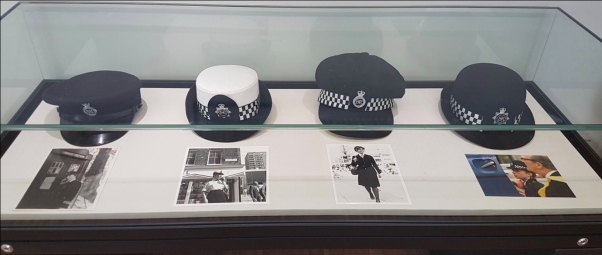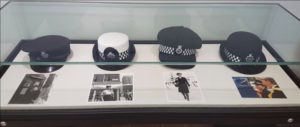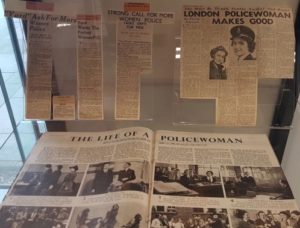
How do you document a Victorian anti-garroting collar? Introducing museum collection management practices to the Metropolitan Police Service Heritage Centre.
The Metropolitan Police Service was founded in 1829 and has two museum collections. The Crime Museum, formerly the Black Museum, was established in 1874 as the repository for criminal evidence. It is housed at New Scotland Yard and is not officially open to the public, although in the 19th century celebrities were able to visit, and it provided the inspiration for Arthur Conan Doyle’s Sherlock Holmes novels. The Metropolitan Police Heritage Centre opened more recently, in 2009. As a museum of the police service, it collects and displays items related to the day-to-day business of the police, such as uniforms and equipment.
Dr. Clare Smith took up the post of Centre Manager in 2018 and was faced with the immediate and huge challenge of cataloguing and classifying thousands of items. Existing documentation was sparse, slightly erratic and below museum standard; often objects had been classified by name of owner rather than type, demonstrating the ingrained police practice of recording everything as evidence with a story to be told. Being forced to re-catalogue the collection has resulted in some nice surprises – for example, the service’s medal collection previously thought to be 300 in size is in fact three times as large.
Knowing that 2019 marked the 100th anniversary of women in the Met police, Clare decided to concentrate on material that could be used in a forthcoming exhibition on female police officers. Thus, giving herself a focus and a deadline to see tangible results.
Clare’s simplified themed displays and policewomen exhibition have proved a great success with the Centre tripling its visitor figures.
Another major challenge for Clare has been to learn the police language of her superiors (note to reader: SPOC means single point of contact, not the Star Trek character!), to educate them on the importance of museum practices and to generally raise the Heritage Centre’s profile within the Met’s strategic priorities.
Clare’s next cataloguing project will be to tackle the uniform collection. She is also aiming to tell the story of the police without bias or backing away from difficult stories and to give a voice to religions, races and groups who have not previously been represented in the displays. Alongside this, Clare is busy writing policies on loans and acquisitions, establishing networks with other police museums and volunteers, preparing for a move from West London to Woolwich and is already starting to think about how to mark the bicentenary of the Met in 2029. Good luck Clare! You have a big job on your hands and I, for one, can’t wait to see the results.

 Instagram
Instagram  LinkedIn
LinkedIn  Twitter
Twitter  My Account
My Account 
